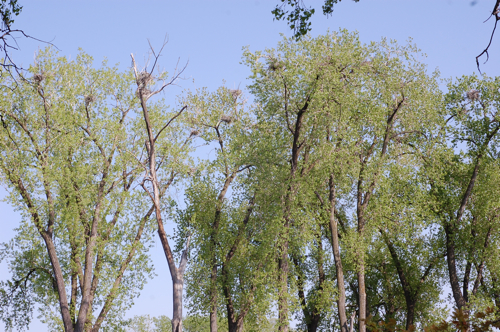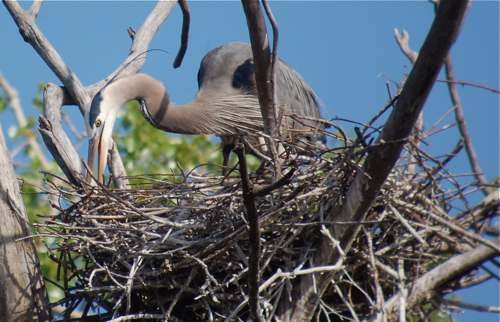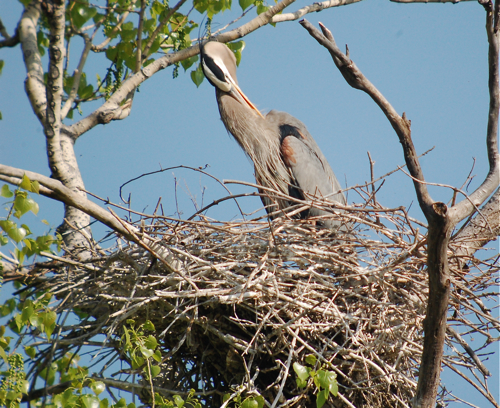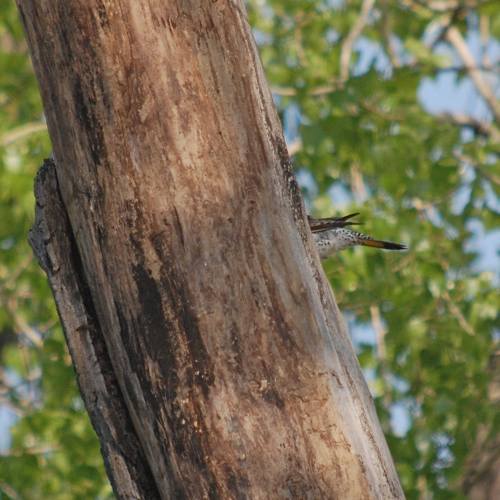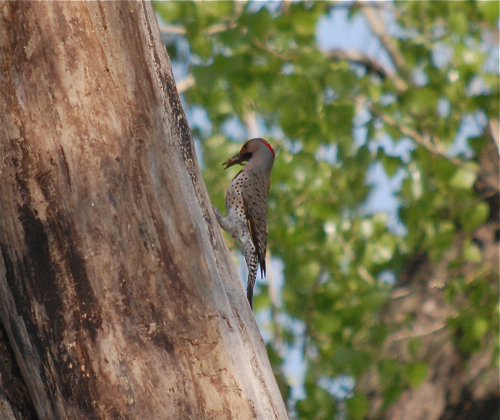For the second time in my life, I have questioned how much I love birds and wondered if I need an intervention. The first time with the Horned Guan Death March , especially in Part 2 of that epic hike up a volcano to see one of the rarest birds in the Americas.
But the second time came last week when I did some mandatory training for our fall waterfowl surveys on the upper Mississippi River.

When we do our aerial waterfowl surveys, we fly low. It seems to me that we are right above the trees, but it's about 150 feet off the ground. It's low. Our biggest danger is power lines that run across the river. Most of them are well marked and we have GPS map system on the plane that alerts us to when we are approaching a set. But accidents happen. If I'm going to keep doing these surveys, then the federal government said that I need to have training on plane safety and how to survive a crash, specifically in water. How did we do that?

Why in a pool at a YMCA! That's one of my teammates and me in a makeshift small plane, belted into our seats and about to be dumped face down in the pool to see if we could calmly unbuckle and leave the plane should it submerge in the water. In order to complete the course, we had to do this four times...twice upside down.
I'm not going to lie...it was nerve racking. I survived three out of four times. The fourth time, I got trapped inside the box and had to be pulled out (I was never in any danger, note all the people in the pool). Two people are watching you under water and they knew right away if you were stuck and they pulled you out. I think because on my third attempt, I got a big shot of chlorinated water up my nose and just general fatigue are the reasons I missed on the fourth attempt. And really, the chances of me crashing into water four times in a row in an afternoon are incredibly slim. I have high hopes I'll survive a water crash and even higher hopes that I won't even need to use this training in my lifetime.

Here we are on one of our simulated crashes when they turned us upside down--you can see our toes. I think it was this dunking when I asked myself...how much do I love birds? If this is what I need to do in order to complete my job to watch and count them from a plane, then maybe there is something psychologically wrong with me. But still, even when we did the classroom portion, I asked myself, "Is counting ducks important enough for me to risk not coming home to Non Birding Bill at the end of the day?"
I think what we learn about native duck usage of the upper Mississippi River is important for the long run and it is worthwhile. Honestly, flying in the plane has been fun and seems like an adventure. However, when you're preparing for a worst case scenario (that will most likely never happen) you do play those scenarios in your head and you wonder if you will be ready if that moment comes.
The first day was general classroom work on plane safety and guidelines. We were given examples of plane crashes and outlined all the little things that could have prevented them and the reasons why some people survived and some people didn't. When I first started doing these surveys, I took an online course on crash survival. I chuckled as the training showed little cartoon planes fall to a fiery explosion and then learned that the number one thing that is going to save me in a crash is a positive mental attitude (surprisingly, not a parachute).
Our classroom training reinforced that and we learned the Seven Steps of Survival in a Plane Crash on Water. Any guesses as to what the first step is when the pilot shouts, "May Day, we're going down!" (or some form of profanity) Any idea?
Step one, say, "I'm a survivor!"
Side note: Do not sing it like a Gloria Gaynor song...that's frowned upon. But first things first, you want to mentally psyche yourself up that you will stay calm and get through this. You will survive and end up at home with your family at the end of the day.
You might be surprised to learn that of the Seven Steps, unbuckling your seat belt is Step Six. Before that, you need to (shout, "I'm a survivor!") unplug your helmet, open the plane door (if you're sitting next to it) brace for impact, when you hit the water you want to count to four to give yourself time to for the plane to stop moving and then sit up, find a reference point to the open door (make sure the doorway is still clear) and then you can unbuckle your belt and exit. The last thing you want to do it swim towards the top with a hand up first to check for debris and/or flames on the water (yikes).

The helmets remind me of the movie Spaceballs. The training was fun in a Mythbusters sort of way and a bit morbid, but I'm so grateful that I had it. I'm fortunate in that we have a professional and attentive pilot but I feel more prepared than ever should we have to go down into the river.
All part of the fun and exciting life of being a park ranger.
 The great blue heron rookery is easily visible now in North Mississippi Regional Park. I had to give a program there on Saturday afternoon and the nest building birds were a treat to watch. The trees haven't leafed out yet and so you can make out which nests are still under construction and which already contained incubating females.
The great blue heron rookery is easily visible now in North Mississippi Regional Park. I had to give a program there on Saturday afternoon and the nest building birds were a treat to watch. The trees haven't leafed out yet and so you can make out which nests are still under construction and which already contained incubating females.
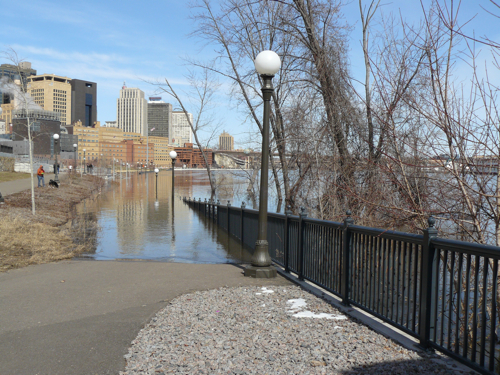 The Mississippi River has been flooding a bit in downtown St. Paul, MN. It's an exciting time for us park rangers at
The Mississippi River has been flooding a bit in downtown St. Paul, MN. It's an exciting time for us park rangers at 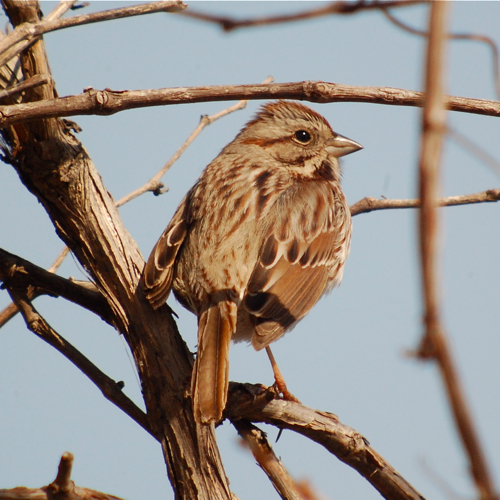
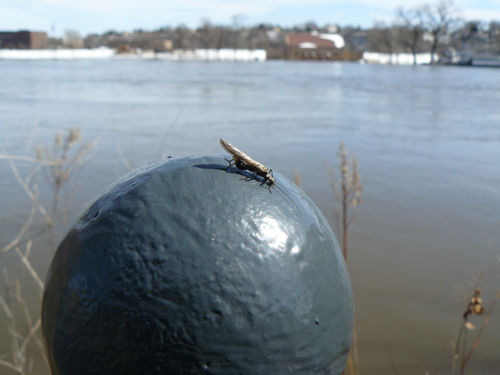

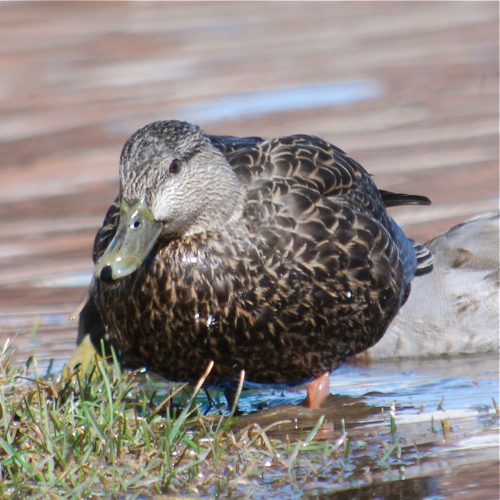




 Monday was our first flight out for our annual fall waterfowl surveys on the upper Mississippi. This is our initial flight to get back into the swing of things, make sure our maps are correct and to get a refresher course on identifying and counting waterfowl while flying over them. Last year my route went from around Hastings to Lake City. This year, there were some staffing changes and now my part of the surveys go all the way down to
Monday was our first flight out for our annual fall waterfowl surveys on the upper Mississippi. This is our initial flight to get back into the swing of things, make sure our maps are correct and to get a refresher course on identifying and counting waterfowl while flying over them. Last year my route went from around Hastings to Lake City. This year, there were some staffing changes and now my part of the surveys go all the way down to 






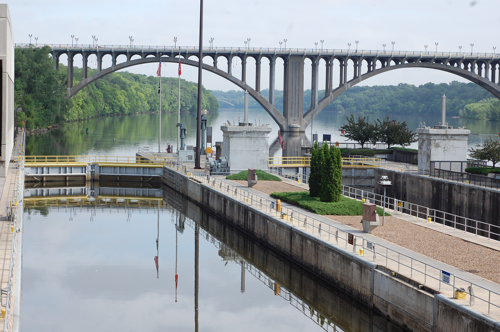 As part of my duties as a park ranger, we go out and rove in the park. Basically, we tote around a back pack with park info and you're on hand to answer questions--it's fun, it's a bit like improv. I like to take my scope for birding of course, but it gives me a chance to explore more areas of the park that I otherwise wouldn't visit. One is Lock and Dam 1. On Friday, we did a canoe paddle through the lock (you really haven't experienced the Mississippi until you've taken a canoe or kayak through a lock and dam--to be tiny in something so big is amazing). It was fun Saturday morning to look down on it knowing the day before I had been right in it.
As part of my duties as a park ranger, we go out and rove in the park. Basically, we tote around a back pack with park info and you're on hand to answer questions--it's fun, it's a bit like improv. I like to take my scope for birding of course, but it gives me a chance to explore more areas of the park that I otherwise wouldn't visit. One is Lock and Dam 1. On Friday, we did a canoe paddle through the lock (you really haven't experienced the Mississippi until you've taken a canoe or kayak through a lock and dam--to be tiny in something so big is amazing). It was fun Saturday morning to look down on it knowing the day before I had been right in it.
 This is the view from the deck of the Lock and Dam 1 visitor center. You can see the peregrine nest box on the far left on the wall (note the box below the brick building). As I watched this, I noticed some flapping behind the big pipe on the right...
This is the view from the deck of the Lock and Dam 1 visitor center. You can see the peregrine nest box on the far left on the wall (note the box below the brick building). As I watched this, I noticed some flapping behind the big pipe on the right...
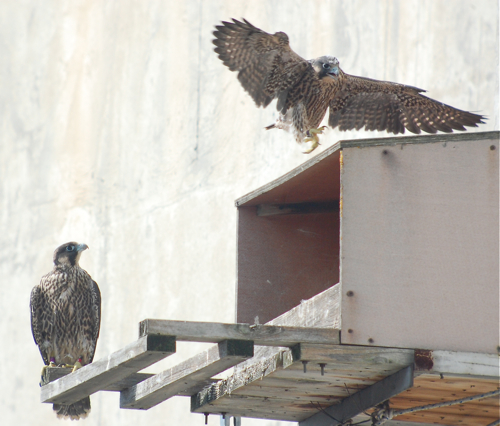 The other two continued to practice. The one on top of the box almost seemed like it was really going to get completely off the box, but stayed and screamed impatiently for one of the adults to feed it. The adults flew in once or twice with food, but no drop offs were made in the box. They want the young out of the nest so they can learn to fly. The chicks want to be fed and eventually, they will put two and two together. When the chicks are hungry enough, they will fly out towards the adults with the food.
The other two continued to practice. The one on top of the box almost seemed like it was really going to get completely off the box, but stayed and screamed impatiently for one of the adults to feed it. The adults flew in once or twice with food, but no drop offs were made in the box. They want the young out of the nest so they can learn to fly. The chicks want to be fed and eventually, they will put two and two together. When the chicks are hungry enough, they will fly out towards the adults with the food.





 Just a heads up that right now is an excellent time for peregrine falcon viewing at
Just a heads up that right now is an excellent time for peregrine falcon viewing at 








